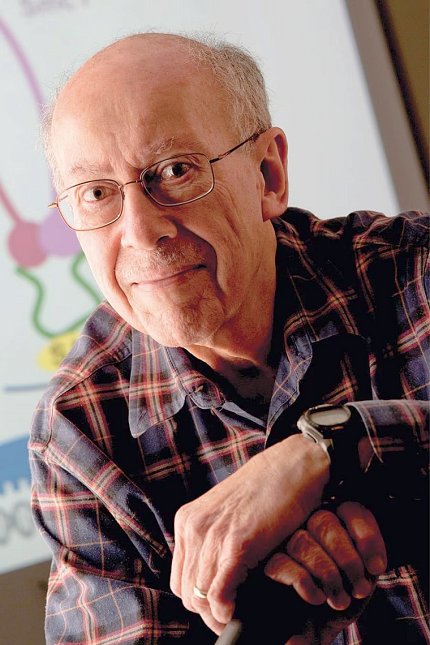NIDDK Remembers Research Pioneer Felsenfeld

“To focus on an experiment and to shut out everything else is one of the great pleasures,” said NIH Distinguished Investigator Dr. Gary Felsenfeld in his 2019 oral history.
During his more than 60 years at the National Institute of Diabetes and Digestive and Kidney Diseases (NIDDK), Felsenfeld’s keen focus and enthusiasm for science never flagged. His long career was marked by monumental, lasting breakthroughs that transformed the field of molecular biology, particularly in relation to chromatin—the complex mixture of DNA and proteins that form chromosomes inside the nucleus of a cell.
Felsenfeld died on May 1 at age 94.
“Gary Felsenfeld was a creative and rigorous investigator who pioneered our current understanding of chromatin and the control of gene expression, among many other seminal contributions,” said Dr. Michael Krause, NIDDK scientific director. “His work earned the respect of his colleagues throughout his career, many of whom also became luminaries in the field, and his exalted reputation will persist for decades to come.”
After graduating from Harvard College, Felsenfeld received his Ph.D. at the California Institute of Technology, where he studied with world-renowned chemist Dr. Linus Pauling. In 1956, Felsenfeld joined the Public Health Service and began work at the National Institute of Mental Health studying polynucleotides. There, he played a key role in discovering the first three-stranded nucleic acid molecule.

Photo: Credit niddk
In 1961, Felsenfeld joined NIDDK as a founding member of the Laboratory of Molecular Biology, which shared in the discovery of the first erythroid-specific transcription factor. He became lab chief in the late 1990s and spent the next decade investigating chromatin boundary regions, eventually identifying the protein CTCF as a major genomic boundary protein. This discovery led to research on long-range interactions in the nucleus that affect insulin regulation in human pancreatic cells.
“Gary was the ultimate scientist—infinitely curious, well-informed, analytical, rigorous and creative,” said Dr. Michael Gottesman, senior investigator at the National Cancer Institute, who served as NIH deputy director of intramural research from 1994 to 2022. “He was also a wonderful, caring human being who was a powerful advocate for the early-career scientists who worked with him, and a friend to his many colleagues.”
Throughout his career, Felsenfeld always gave credit to the NIH Intramural Research Program, which gave him the opportunity to spend countless hours doing what he loved most.
“At the NIH, I can work at my lab bench and experiment all day long...,” he said in a 2021 interview for the NIDDK Director’s Update. “The freedom to try unusual new experiments and explore out-of-the-ordinary ideas is something that is hard to find in the scientific world.”
When he wasn’t solving complex scientific problems, Felsenfeld devoted much of his time to mentoring trainees, many of whom went on to become prominent leaders of research groups worldwide. He also published more than 250 primary research papers and garnered many awards.

Photo: Credit NIDDK LABORATORY OF MOLECULAR BIOLOGY
“Gary embodied everything that is true greatness—as a scientist, colleague, mentor and friend,” said NIDDK Deputy Scientific Director Dr. Susan Buchanan, who’s served as chief of the Laboratory of Molecular Biology since 2014. “He will be remembered for his wry sense of humor, his optimistic perspective, his generosity, his wonderful friendship to so many of us and his illustrious career.”
NIDDK Director Dr. Griffin Rodgers also reflected on Felsenfeld’s extraordinary legacy:
“Next year marks NIDDK’s 75th anniversary, a time to celebrate the institute’s many scientific achievements. Gary’s contributions are among NIDDK’s most notable research advances throughout its rich history. He was a trailblazer in his field, an inspiration to so many and a beloved colleague who enriched the lives of all who knew him.”
Felsenfeld is survived by his wife, Naomi, children Sara, Adam and Dan; eight grandchildren; and one great grandchild.
